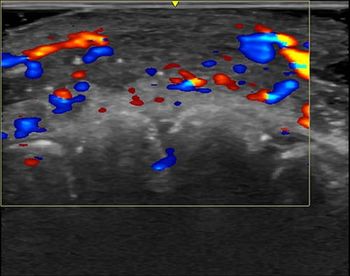
AI-Driven Nevus Identification May Help Better Quantify Melanoma Risk
The automated algorithm can help save both time and money and minimize clinical subjectivity.
The combined use of a nevus identification algorithm and 3D total body imaging may help to reduce clinical subjectivity and improve estimations of melanoma risk, according to findings presented at
As a major risk factor for melanoma, assessment of nevi on the skin is an important part of the dermatological exam, though the manual counting process uses up an extensive amount of resources. Often, nevi identification and counting is left up to the patient, which can introduce a large margin of error in clinical evaluations.
To combat this, researchers led by Brigid D. Betz-Stablein, PhD, sought to develop an automated nevus identification algorithm using 3D body imagery produced by the VECTRA WB360 imaging system, which allows for total body photography.
Dermatologists were used to identify nevi with diameters of at least 2mm on VECTRA 3-D avatars created from members of the general population; the labeled nevi were used to train a neural network-based artificial intelligence algorithm, which was then tested an additional 10, random avatars not included in the training set. Ultimately, results from the algorithm were compared with the in-clinic assessment as well as consensus of on-screen nevi counts from 3 additional experts.
Overall, the algorithm showed a sensitivity and specificity of 79% and 91%, respectively, and an overall accuracy of 90% in its ability to identify nevi of at least 2mm in diameter. Kappa increased from 0.56 to 0.72 for nevi larger than 5mm. Notably, the algorithm was unable to consistently differentiate between nevi and seborrheic keratoses, resulting in significant differences in nevi counts in individuals with a large number of seborrheic keratoses. Still, there was good agreement observed between the clinician evaluations and the algorithm assessments when broken down by nevus density (few, <20; some, 20-50; many, >50). Perhaps most important was the observed high heterogeneity between the relative risk of melanoma dependent on extent of partial or total body counts.
While the algorithm could be improved by incorporating seborrheic keratoses images in the training set, overall the AI nevus assessment has potential to have a positive impact on clinical assessment of nevi and evaluation of melanoma risk, conserving clinician time and costs.
For more coverage of SIIM 2020,
Newsletter
Stay at the forefront of radiology with the Diagnostic Imaging newsletter, delivering the latest news, clinical insights, and imaging advancements for today’s radiologists.




























